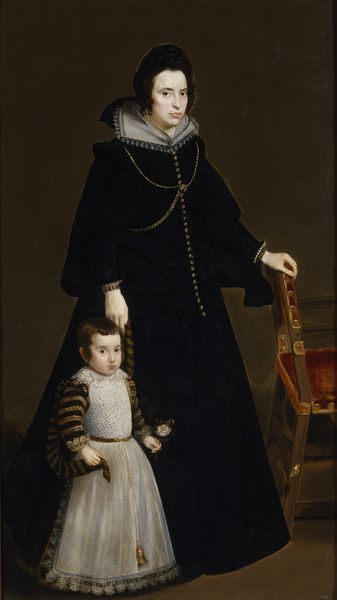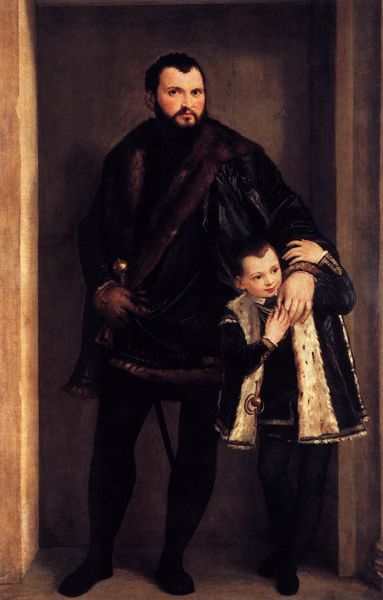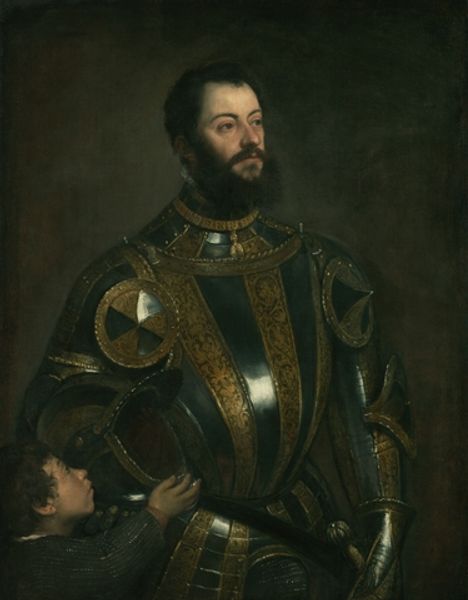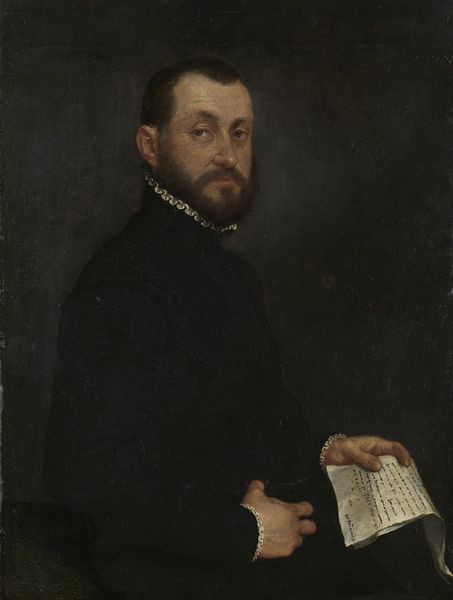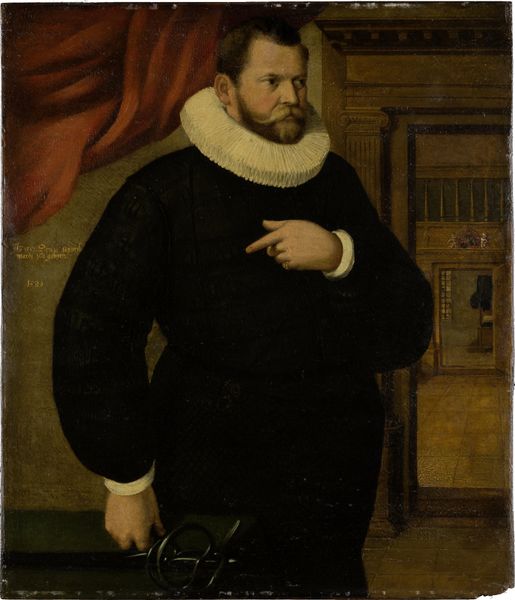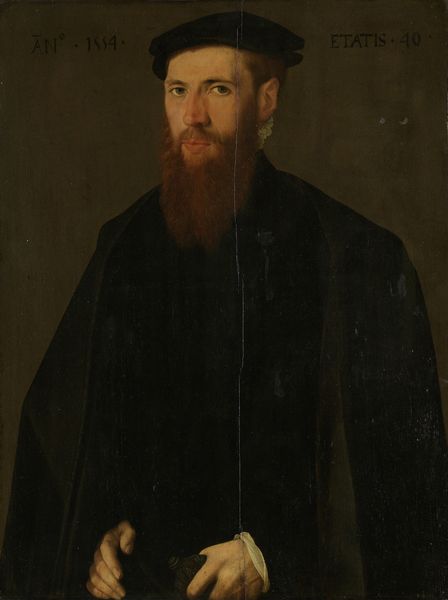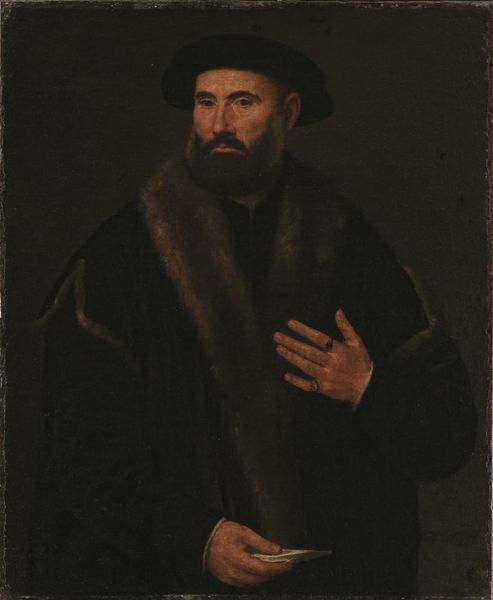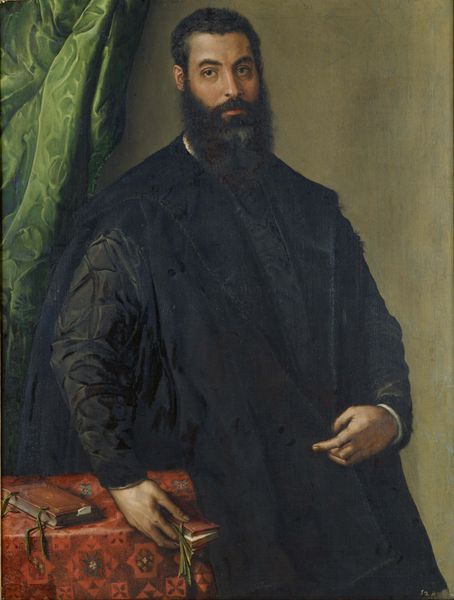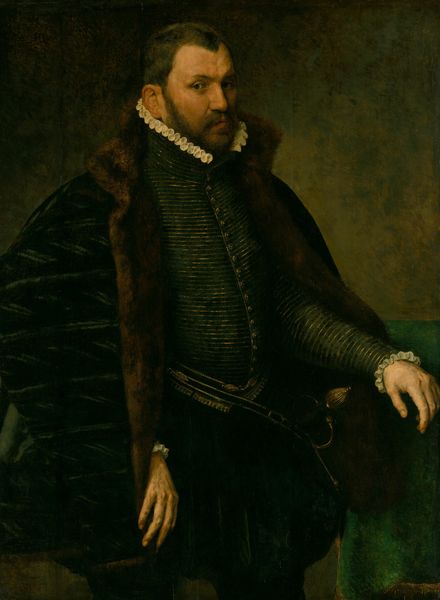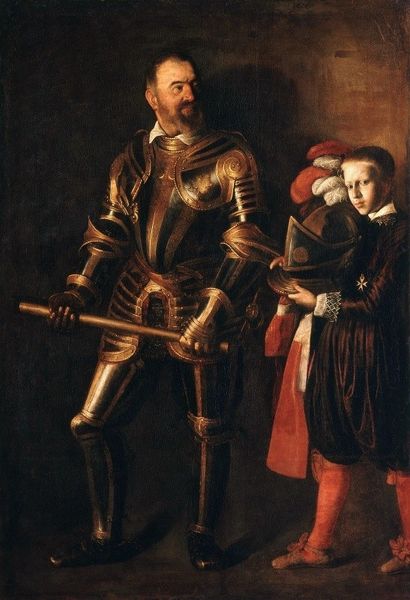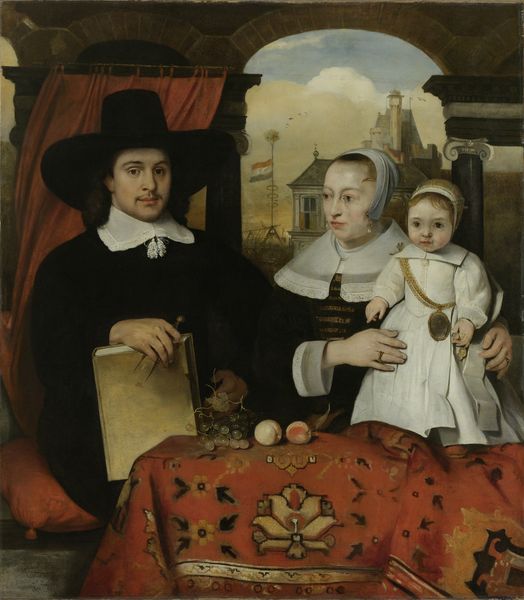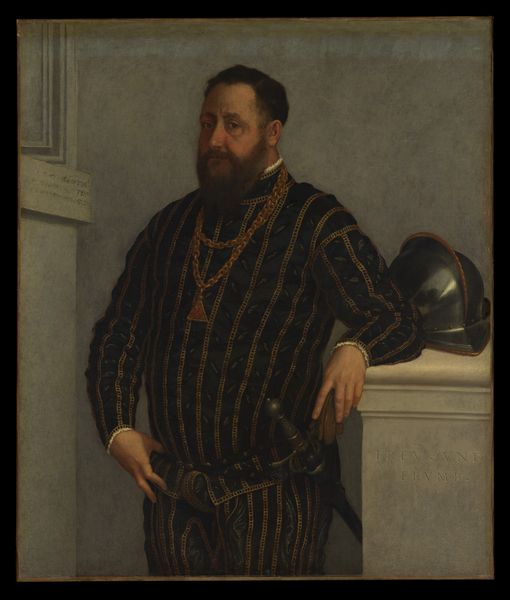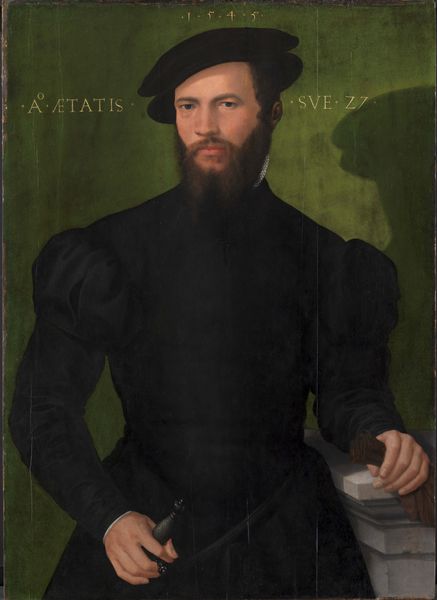
Portrait of the Nuremberg Goldsmith Hans Lencker (1523-1585) and his 9-year old son Elisius the Younger 1570
0:00
0:00
painting, oil-paint, canvas
#
portrait
#
character portrait
#
portrait image
#
portrait
#
painting
#
oil-paint
#
portrait subject
#
figuration
#
11_renaissance
#
canvas
#
portrait reference
#
portrait head and shoulder
#
portrait drawing
#
history-painting
#
northern-renaissance
#
portrait art
#
fine art portrait
#
celebrity portrait
Dimensions: 95.5 cm (height) x 93 cm (width) (netto)
Nicolas Neufchâtel painted Hans Lencker and his son Elisius in 1570, capturing the essence of the Nuremberg goldsmith's standing. The most striking aspect of the portrait is the father's assured gaze and the son's gentle demeanor, both underscored by the cubes they hold on the table, objects symbolic of their trade, family and legacy. Consider, if you will, how the passing of objects from father to son is a common theme. In antiquity, the passing of a scepter or a family seal was a symbol of power and continuation, but here, the cubes of gold represent a more intimate, domestic power; the passing down of skill and the perpetuation of craftsmanship. The cubes, seemingly simple, carry layers of psychological weight. They are a promise of inheritance and a projection of familial aspiration. Like ancient votive offerings, they represent a deep, subconscious desire to be remembered and the emotional weight of familial bonds. The motif of passing down a skill from father to son, an echo through history, is a visual embodiment of cultural memory.
Comments
No comments
Be the first to comment and join the conversation on the ultimate creative platform.
